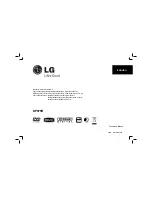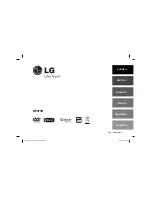
19
EGES14020T man v.190417
Operating Instructions
5.
VAPOURS FROM MANY CLEANERS,
SPRAYS, AND DEGREASERS CAN BE
HIGHLY TOXIC WHEN HEATED.
Parts
degreased with a solvent must be thoroughly dry
before welding.
6.
DO NOT PERFORM WELDING OR
CUTTING OPERATIONS ANYWHERE
NEAR CHLORINATED SOLVENTS.
Vapours
from chlorinated hydrocarbons, such as
trichloroethylene and perchloroethylene can
be broken down by the heat of an electric arc
or by its ultraviolet radiation. This can cause
phosgene, a highly toxic gas used in World War
I as the chemical weapon, mustard gas, to be
produced, as well as other lung and eye-irritating
gases. Working with the welder anywhere
these solvent vapours can be drawn into the
work area or where the ultraviolet radiation can
reach into areas containing even small amounts
of these vapours. must be avoided. Refer to
the MSDS (material safety data sheet) for the
manufacturer’s instructions.
7.
DO NOT WELD IN ANY CONFINED
AREA UNLESS IT IS ACTIVELY AND
ADEQUATELY VENTILATED
or if the operator,
and everyone else present is wearing an air-
supplied respirator.
8.
STOP WELDING IMMEDIATELY IF YOU
NOTICE EVEN MOMENTARY EYE, NOSE,
OR THROAT IRRITATION
because this points
to inadequate ventilation. Stop work and improve
the fresh air supply in the welding area. Do
not resume welding if your physical discomfort
persists.
Flash Hazards; UV and IR Arc Rays
The welding arc operations
produce ultraviolet (UV) and
infrared (IR) rays. These arc rays can injure
your eyes and burn your skin. To reduce the
risk of injury from arc rays, read,
understand, and follow the following safety
instructions. In addition, make certain that
everyone else that uses this welding
equipment, or is a bystander in the welding
area also understands and follows these
safety instructions. Headshields or helmets
and filter lens should conform to ANSI Z87.1
standards.
1.
DO NOT LOOK AT AN ELECTRIC ARC
WITHOUT PROPER EYE PROTECTION.
Welding arcs produce extremely bright,
intense energy and, with inadequate or no
eye protection, the eye’s retina can be quickly
burned, leaving a permanent dark spot in the
field of vision. Operators and lookers-on must
use a shield or helmet with a number 12 shade
filter lens (minimum) installed.
2.
PROVIDE BYSTANDERS WITH SHIELDS
OR HELMETS FITTED WITH A #10 SHADE
FILTER LENS
and do not strike a welding arc
until all bystanders and you (the operator) have
welding shields and/or helmets in place. Use
a lens that meets ANSI standards and safety
glasses with side shields. For welders such as
this one, above 160 Amps, use a shade 12.
(Under 160 Amps output, use a shade 10 lens.)
Refer to the ANSI standard Z87.1 for more
information.
3.
DO NOT USE A CRACKED OR BROKEN
HELMET.
Replace it and replace any cracked or
broken filter lenses IMMEDIATELY.
4.
COVER ALL BARE SKIN AREAS EXPOSED
TO THE ARC WITH PROTECTIVE
CLOTHING AND SHOES.
Wear protective dark
clothing of heavy material. The intense light of
the welding arc can burn the skin in much the
same way as the sun, even through light-weight
clothing. Flame-retardant cloth or leather long-
sleeved shirts, coats, pants or coveralls should
be used for protection, the collar kept buttoned to
protect chest and neck.
5.
USE A HELMET THAT COVERS YOUR FULL
FACE
from the neck to top of head and to the
backs of the ears.
6.
TAKE CARE NOT TO ALLOW AN
UNINSULATED PORTION OF THE
ELECTRODE HOLDER TO TOUCH THE
GROUND CLAMP
or grounded work to prevent
an arc flash from being created on contact before
you are protected.
7.
CONSIDER YOU SHOULD ALSO PROTECT
YOURSELF AGAINST REFLECTED ARC
RAYS.
Arc rays can be reflected off shiny
surfaces such as a glossy painted surface,
polished aluminum, stainless steel, and
glass. It is possible for your eyes to be injured
by reflected arc rays even when wearing a
protective helmet or shield. If welding with a
reflective surface behind you, arc rays can
bounce off that surface, off the inside surface
of the filter lens on the inside of your helmet or
shield, and then into your eyes. These reflected
arc rays can also cause skin burn in addition to
eye injury. If you find a reflective surface in your
welding area, either remove it or cover it with
something non-flammable and non-reflective.
8.
USE SCREENS OR OTHER BARRIERS
to
protect other people from the arc rays emitted by
your welding.
9.
WARN PEOPLE NEAR YOUR WELDING
AREA
when you are going to strike an arc so
they can take measures to protect themselves.
Fire Hazards
Fire or explosion can cause
death, injury, and property
damage.
To reduce the risk of death, injury, or property
damage from fire or explosion, read, understand,
and follow the following safety instructions. In
addition, make certain that anyone else that uses
this welding equipment, or is a bystander in the
welding area, understands and follows these safety
instructions as well.













































